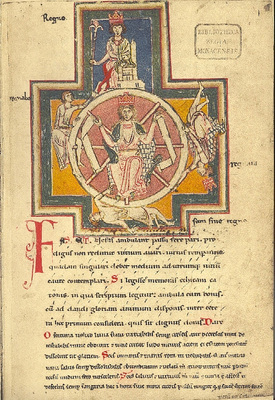introduction:
The "Carmina Burana", a medieval collection of poems, tell us about life and love, about hope and happiness of young people in the past.
 Several centuries later, Carl Orff, a German composer, transformed some of these poems into music, a series of songs with full orchestral accompaniment.
Several centuries later, Carl Orff, a German composer, transformed some of these poems into music, a series of songs with full orchestral accompaniment.
The motive of the wheel of Fortuna is important to him. It turns hope to disappointment, love to loss. But it can also bring you to the top again. Therefore the mighty hymn to Fortuna ("O fortuna, velut luna, statu variabilis") appears twice in Orff's composition: at the beginning and at the end.
The swing of the wheel as well as the motive of dance which appears again and again in the poems make Orff's "Carmina Burana" the perfect base for a dance choreography.
And this is what we will work on in this section!
To get started:
What are the "Carmina Burana"?
Who was Carl Orff?
And now it's your turn!
Find out about "Rhythm is it!" - a music and dance project of conductor Simon Rattle and choreographer Royston Maldoom.
Then listen to a speech of Royston Maldoom about:
How can you change life in a dance class?
and comment (discussion below) on what he is saying about his method and aims.
And for deepening this subject with a Latin text in a European context, here are the materials for the Webquest. Let's go!